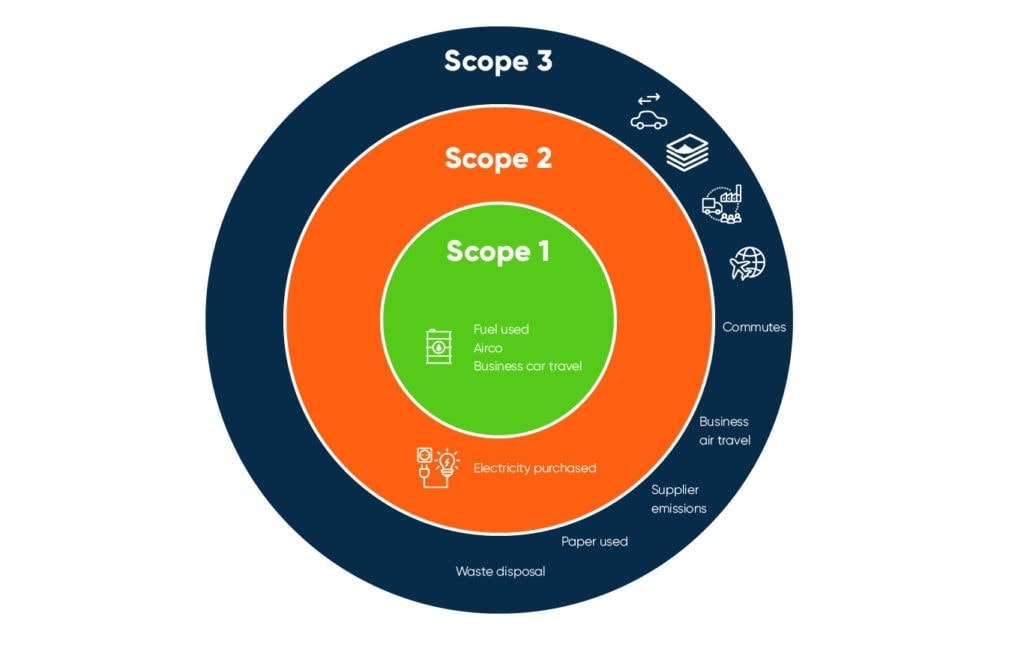The concept of emission scopes was introduced by The Greenhouse Gas Protocol (GHG Protocol).
The goal: to define how a company controls the greenhouse gas (GHG) emissions it is responsible for. Do we cause the GHG emissions ourselves, or are we causing them indirectly, through our supply chain?
Even though the emission scopes are related to measuring company footprints according to the GHG Protocol. It’s common to now use the terms scope 1, 2, and 3 for all 15+ emission types in Life Cycle Assessment (LCA) too.
Where emission scopes are used
The GHG Protocol is the most widely used international accounting tool for government and business leaders to understand, quantify and measure greenhouse gas emissions (GHG). It’s most commonly used to make a company footprint. But also used to divide the emissions when measuring a Life Cycle Assessment (LCA) of products.
This being said, emission scopes are widely used in political efforts to regulate carbon emissions- think of carbon taxation. Most carbon pricing constructs right now, for example, only account for scope 1 emissions.
Another goal of different emission scopes is to improve transparency. And make different accounting and reporting methods more useful for different types of organizations.
In short: certain industries might have a lot of control over their indirect emissions – others might not.
Scope 1, 2, and 3 Direct vs. Indirect Emissions

Scope 1: Direct Emissions
Direct Greenhouse Gas Emissions come from sources that are owned or controlled by the reporting entity. This could be the emissions that are directly created by manufacturing goods, for example, factory fumes.
This does not account for the combustion of biomass.
Scope 2: Indirect Emissions from Energy
Scope 2 accounts for Greenhouse Gas Emissions from the generation of purchased electricity, steam, and heating/cooling.
These emissions physically occur at the facility where electricity, steam, and cooling or heating are generated. But as a user of the energy, the consuming party is still responsible for the Greenhouse Gas Emissions that are being created.
Scope 3: Indirect Emissions
Scope 3 Emissions are emissions from sources that are not owned and not directly controlled by the reporting company. However, they are related to the company’s activities. This is usually considered to be the supply chain of the company, so emissions caused by vendors within the supply chain, outsourced activities, and employee travel and commute.
In many industries, Scope 3 emissions account for the biggest amount of GHG emissions. This is due to the fact that in today’s economy, many tasks are outsourced, and few companies own the entire value chain of their products.
Scope 1 and 2 emissions are much easier to calculate than Scope 3 emissions. For the simple reason that they are directly controlled by a company. To effectively measure our Scope 3 emissions, we need to dive deeper into our value chain. A commitment that many companies are not yet ready to take. Despite the fact, that the biggest levers to reduce carbon emissions lie there. Read more about how to incorporate your suppliers in your sustainability journey right here.

